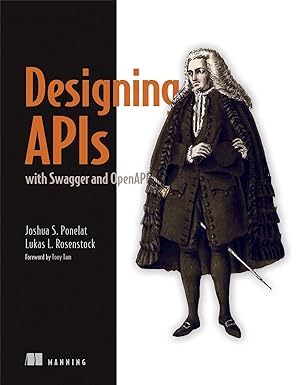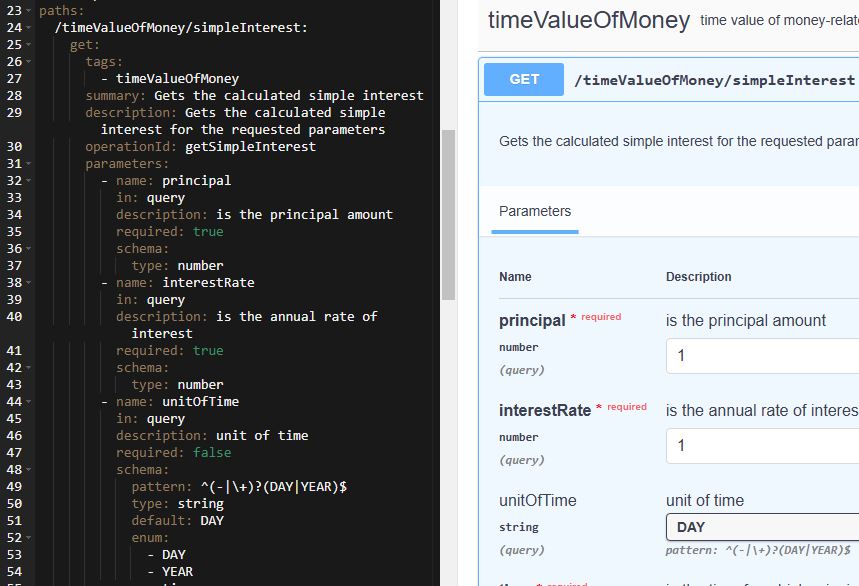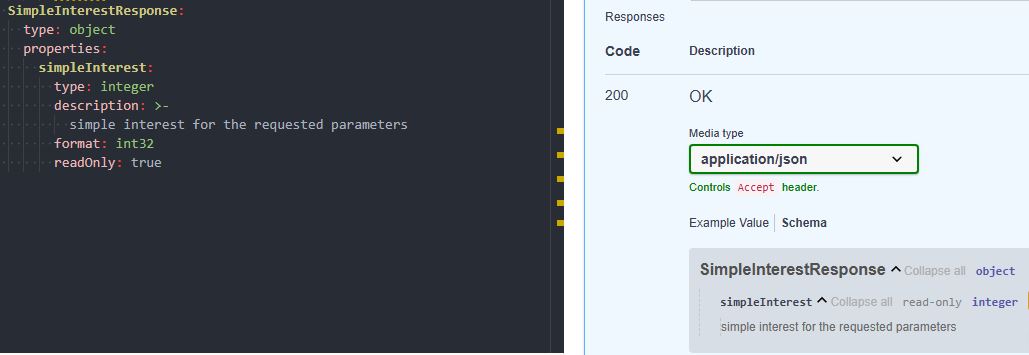Designing APIs with Swagger and OpenAPI
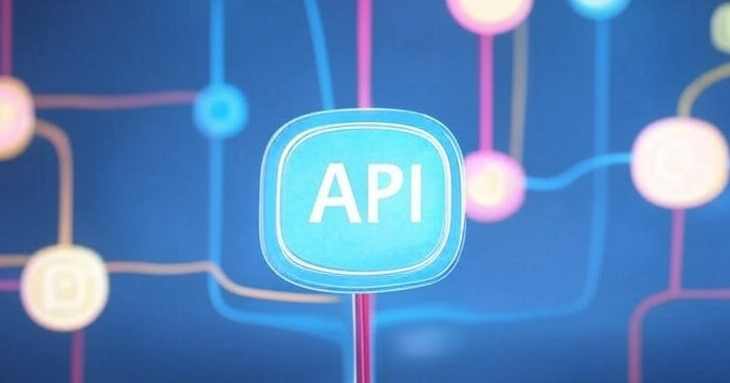
In this series of articles, we will follow a real API project from concept to production, and learn hands-on how to describe and design APIs using OpenAPI in the Swagger Editor.
The OpenAPI Specification (OAS) enables business knowledge transfer from API provider to API consumer. It is an open standard for describing your APIs, allowing you to provide an API specification encoded in a JSON or YAML document.
This allows customers and developers to understand how a RESTful API works, how a sequence of APIs work together, generate client code, generate server stub, create tests, apply design standards, what are the expected results, and much, much more.
SwaggerHub is an online platform where you can design your APIs – be it public APIs, internal private APIs, or microservices. The core principle behind SwaggerHub is Design First, Code Later.
Design-First Approach. A design-first approach means planning your APIs in detail before any code is written.
Using SwaggerHub, you can design fast and generate documentation automatically with the OpenAPI specification.
Requirement
What should my API do?. Create a Finance API that returns calculated financial metrics, such as Simple and Compound Interest, Present Value (PV), Future Value (FV), Net Present Value (NPV), Internal Rate of Return (IRR), and many more.
APIs should be designed from the perspective of the consumer and consider the requirement to abstract the underlying representation to reduce coupling.
Getting Started with OpenAPI Specification
Once you have created a Free Account in the Swagger editor, sign in to the tool and choose “Create API”.
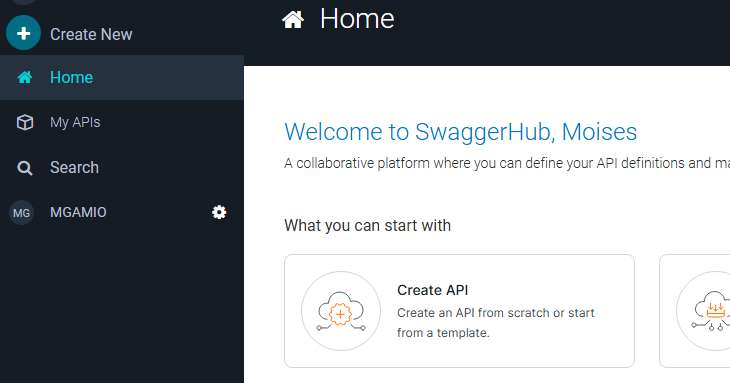
Then, select a template or create a Blank API:
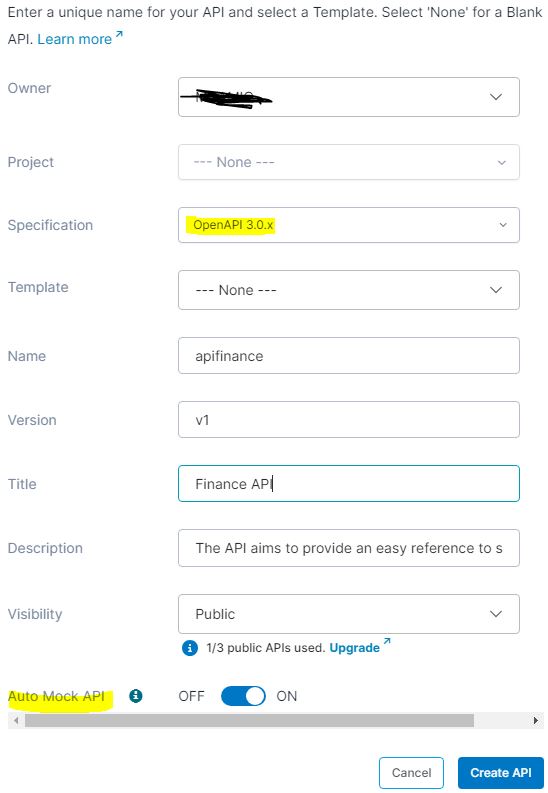
Here, the first result:

We are going to build an API Description Through Documentation by following the concepts included in the OpenAPI Specification Explained.
By default, it includes the following minimal fields:
openapi: This string MUST be the semantic version number of the OpenAPI Specification version that the OpenAPI document uses.
info: Provides metadata about the API (such as title, description, version, and contact information).
paths: Holds the relative paths to the individual endpoints and their parameters, and all possible server responses.
Now, we add more metadata
servers: an array to specify one or more base URLs for your API.
1
2
3
4
5
servers:
- description: SwaggerHub API Auto Mocking
url: https://virtserver.swaggerhub.com/MGAMIO/apifinance/v1
- description: Production server
url: https://codersite.dev/apifinance/v1
tags: we use a tag to group similar operations. For example:
1
2
3
4
5
tags:
- name: timeValueOfMoney
description: time value of money-related operations
- name: moneyMarkets
description: operations related to short-term financial instruments which are based on an interest rate
/{path}: A relative path to an individual endpoint.
Path Item Object: Describes the operations available on a single path.
get: A definition of a GET operation on this path.
operationId: Unique string used to identify the operation. It will be exported as a name for the method in our implementation code.
parameters: A list of applicable parameters for all the operations described under a specific path.
Here is a code snippet of how we define a getSimpleInterest operation:
1
2
3
4
5
6
7
8
9
10
11
12
13
14
15
16
17
18
19
20
21
22
23
24
25
26
27
paths:
/timeValueOfMoney/simpleInterest:
get:
tags:
- timeValueOfMoney
summary: Gets the calculated simple interest
description: Gets the calculated simple interest for the requested parameters
operationId: getSimpleInterest
parameters:
- name: principal
in: query
description: is the principal amount
required: true
schema:
type: number
- name: interestRate
in: query
description: is the annual rate of interest
required: true
schema:
type: number
- name: time
in: query
description: is the time for which principal is invested
required: true
schema:
type: number
Someone who reads your API specification must understand the purpose of your parameters. See Best practices for writing Clean Code
As you write the specification, documentation is automatically generated.
You can use the OpenAPI Map as a visual tool to navigate this specification.
responses: A container for the expected responses of an operation.
{HTTP status code} property: Describe the expected response for that HTTP status code.
content: A map containing descriptions of potential response payloads.
Here is an extract of what we expect from the getSimpleInterest operation:
1
2
3
4
5
6
7
8
9
10
11
12
13
14
responses:
'200':
description: OK
content:
application/json:
schema:
$ref: '#/components/schemas/SimpleInterestResponse'
'400':
description: Bad Request
content:
application/json:
schema:
$ref: '#/components/schemas/ErrorDetail'
We have created a reference to a SimpleInterestResponse Object.
You can execute the “Try Out” button and see an example:
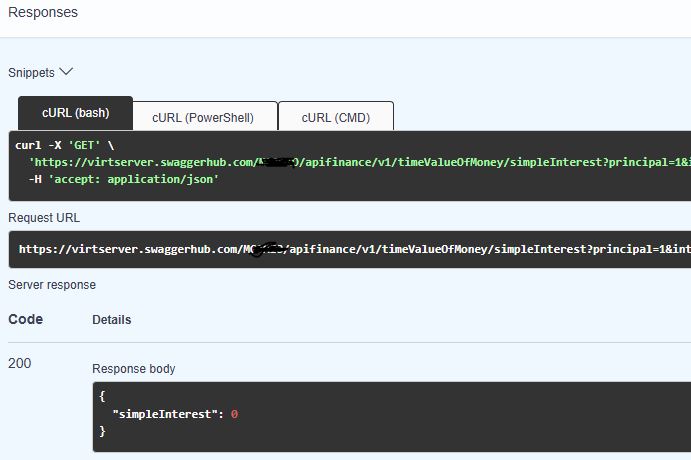
Here you can see the API specification: apifinance/v1
Notes
-
The OpenAPI Specification will be the official reference point to understand the final requirements from your users.
-
From the OpenAPI Specification, you proceed to design and implement all software components required.
-
Any changes to your implementation code must be updated in the OpenAPI Specification and vice versa.
But what we need is a real implementation of this API specification. In my next article, I will explain the Codegen utility to export this specification to Java code.
Please support me as a writer. Every contribution helps, and your donation can help add more articles to this website, no matter how small. Thank you!



